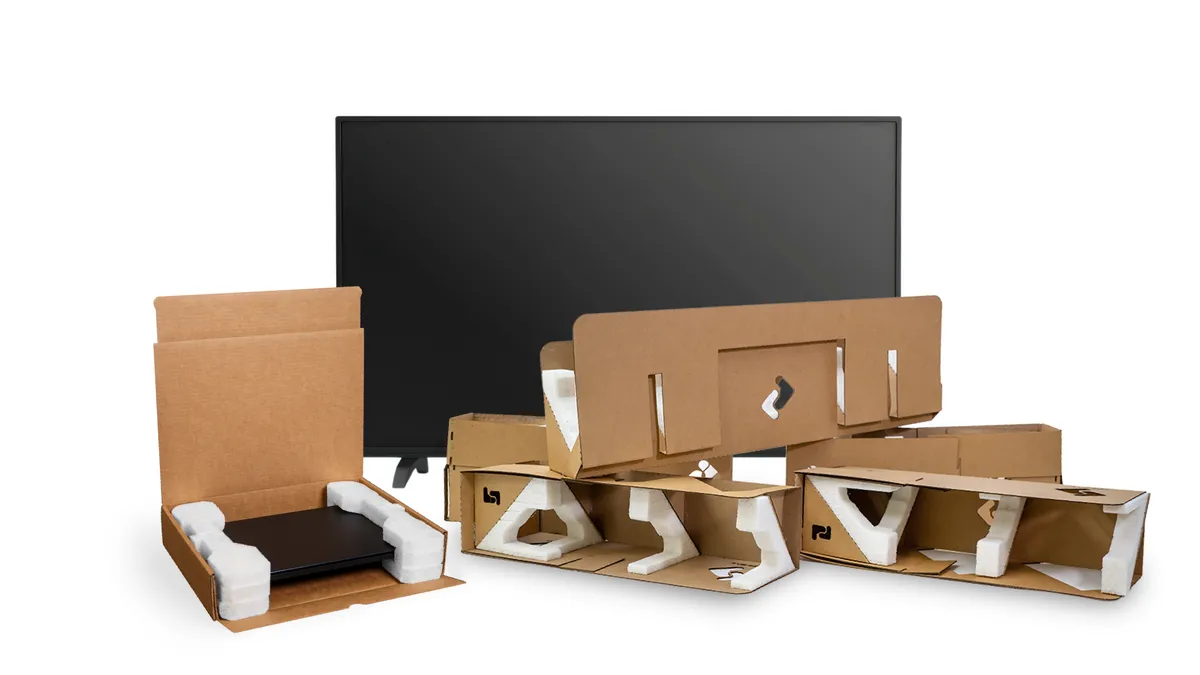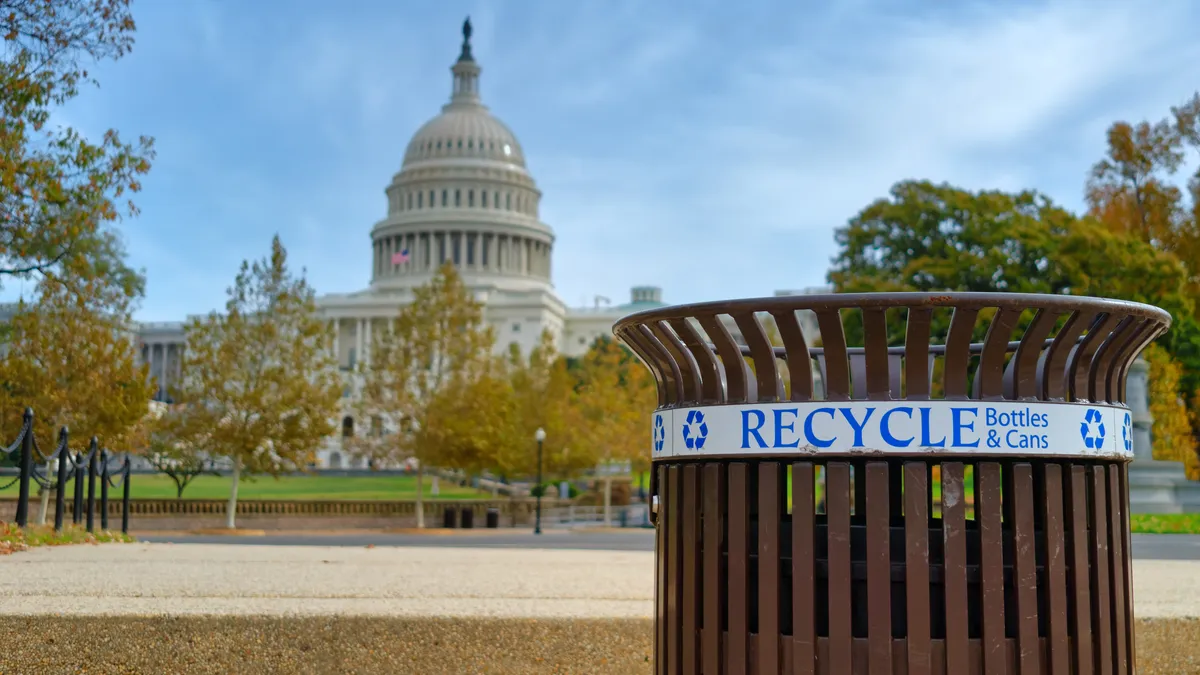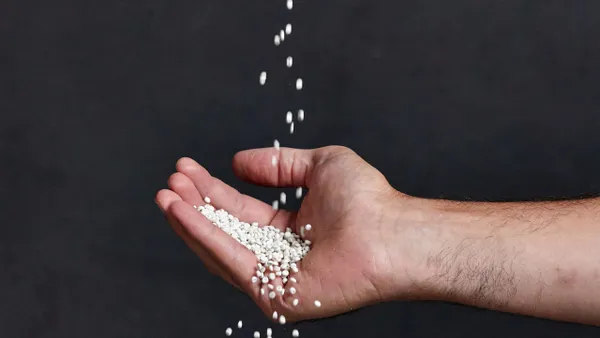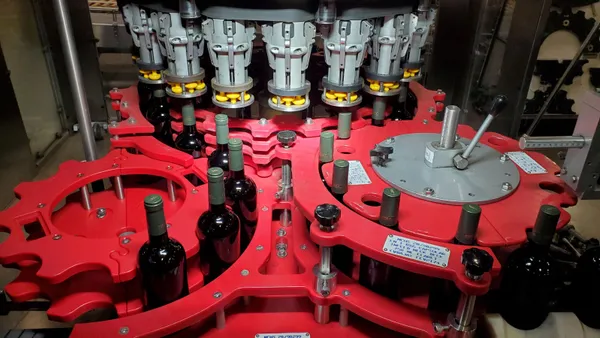As consumer demand for sustainability rises and regulations tighten, companies are abandoning plastic foams such as expanded polystyrene (EPS) and expanded polyethylene (EPE). The environmental impact of these single-use plastics, which are largely not recycled and contribute significantly to waste and the microplastic crisis, has prompted businesses to seek compostable alternatives.
Extended Producer Responsibility (EPR) laws accelerate this change by mandating that companies manage the full lifecycle of their packaging, making non-biodegradable options such as plastic foams less viable. Further, packaging makes up a significant portion of corporate scope three emissions (70% or more). “Carbon insetting” to reduce these numbers is an emerging trend. Transitioning to packaging materials with lower carbon footprints is an excellent way to implement insetting within your company’s supply chain.
Strengths and weaknesses of sustainable block and brace packaging alternatives
As companies move away from traditional plastic foams for block and brace packaging applications, packaging designers are creating more sustainable solutions for block and brace. That’s easier said than done — packaging designers must find materials that match or exceed the technical performance of traditional foams while meeting robust environmental and regulatory stands. The materials must be able to absorb the shock from rigorous drop testing, provide consistent cushioning under varying humidity levels, resist static buildup to protect sensitive electronics and be lightweight but resilient enough for shipping and performance needs.
In the search for new materials that can meet those performance needs as well as environmental and regulatory requirements, several solutions have emerged:
Fiber and paper
These materials are among the most commonly adopted alternatives. They offer a great recyclable alternative and can be engineered for specific protective packaging needs, such as shock absorption and load-bearing. While recyclable and lightweight, they may underperform in high humidity or for applications requiring more cushioning. They also lack the rigidity of traditional foams, posing challenges for heavy or sharp-edged items that require higher structural support.
Mushroom foams
Mushroom-based foams, made from agricultural waste and mycelium, offer biodegradable, compostable packaging with strong cushioning and impact absorption. While they reduce petrochemical reliance, scalability issues and limitations in consistency and humidity resilience hinder their suitability for large-scale industrial applications.
Cruz Foam
Cruz Foam is a bio-based, compostable alternative to EPS and EPE that offers similar impact resistance. Cruz Foam is made from 70% upcycled food waste, epitomizing “reuse” and making it an excellent feedstock for compost. Notable for its strength, lightweight composition and environmental safety, Cruz Foam is an excellent option for companies aiming to achieve both high performance and sustainability. Additionally, it integrates well with fiber and paper-based materials, offering enhanced support and protection where fiber alone may not be sufficient.
Cruz Foam is suitable for a range of use cases, including:
- Electronics
- Small, motorized appliances
- Household items
- Luxury, breakable goods
- Wine and spirits
How to evaluate the right sustainable block and brace solution for you
With the proliferation of plastic packaging alternatives, the question quickly becomes which block and brace solution is right for your products? The first consideration is, unsurprisingly, what you are shipping — is it precision electronics with delicate components, or food items that must be protected from contamination? In many cases, form will follow function in your choices.
By starting here, you can ensure your sustainable materials deliver the protection your products require. Amazon Robotics, for example, implemented Cruz Foam solutions to achieve this balance: “With our commitment to eliminate single-use plastic in our supply chain, we are excited to see the performance we have been able to achieve with industrial-level protective packaging designed by Unified2 using compostable Cruz Foam,” said Minh Le, Senior Packaging Engineer, Amazon Robotics. “We are looking forward to our continued work on expanding the application of sustainable materials in our supply chain.”
An equally important consideration is your equipment capabilities. Plastic alternatives may require machinery or tooling changes, and your team will need to consult with internal packaging engineers or your external vendor to understand what is feasible. Drop-in alternatives are valuable in situations where major equipment overhauls are prohibitively expensive or complex.
Brands must also ask themselves what customers are willing to pay for sustainable alternatives. A recent PMMI roundtable found that consumers are often willing to pay 10% more for sustainable packaging, and recent research notes that a slight percentage may even be willing to pay more. Evaluating the cost of different materials and tooling along with realistic markups will guide decisions about the right alternative materials.
Lastly, it’s important to remember that no company needs to reinvent sustainable packaging in a vacuum. Joining a producer responsibility organization as a means to comply with EPR legislation connects you with nonprofits and fellow manufacturers seeking solutions for end-of-life processes for packaging. The Sustainable Packaging Coalition offers numerous resources and can act as an information hub for best practices and new innovations. Implementing new materials may be challenging, but working with fellow stakeholders and colleagues can simplify the transition.
Conclusion
The shift to sustainable packaging for block and brace applications is a strategic and forward-thinking approach that satisfies both business and environmental needs. While the transition requires an upfront investment in education and supply chain modifications, the long-term benefits — reduced environmental impact, enhanced brand image and compliance with regulatory standards — outweigh these initial hurdles.
Embracing sustainable packaging not only future-proofs your operations but also sets a powerful precedent for innovation and responsibility in the industry. To learn how Cruz Foam can help you boost your image and bottom line, contact one of their experts.










